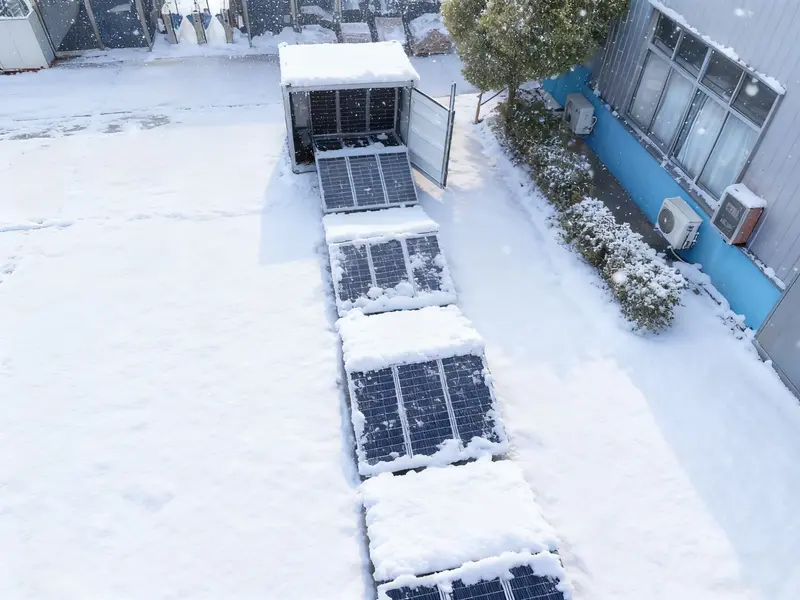Yes, most modern solar panels can take quite a beating — but not all hailstorms are created equal.
The Science Behind Solar Panel Hail Resistance
Here's something that not many people know: solar panels undergo rigorous testing before they ever set foot on your roof.
- Industry Standards: Most panels must pass IEC 61215 or UL 61730 testing, which simulate hailstones up to 1.75 inches (about golf-ball size) traveling at 50 mph.
- Tempered Glass Safety: Panels are protected by tempered solar glass, a strengthened substance that's many orders of magnitude stronger than regular window glass.
- Angled Mounting Advantage: Because panels are mounted at an angle, hailstones will typically bounce off rather than collide head-on, drastically reducing impact force.
So in typical hail weather — pea-sized or marble-sized hail — your solar panels should shake it off without apparent damage.
But come on: nature can be nasty at times.
When Hail Spins Out of Control
The danger occurs when hailstones are bigger than test size or speed. Big or high-speed hail (think baseball-sized chunks traveling at 70 mph) can cause cracks, shattered glass, or micro-damage deep in the cells.
This is where it gets tricky — damage isn't always visible.
A panel may look fine on the ground but in fact have microcracks that will eventually reduce its efficiency. This type of damage would not necessarily trigger a warranty claim, so it is important that performance be inspected following a storm.
If you notice a sudden drop in output after a hailstorm, don't lose sleep — arrange for an IR or EL imaging professional inspection. They can spot unseen internal cracks.
The Colorado Hailstorm Case
Not still convinced? Let's talk numbers.
In 2017, the National Renewable Energy Laboratory (NREL) in Golden, Colorado, took a direct hit from one of the most damaging hail storms in state history. The storm dropped ice fragments nearly 2.75 inches in diameter — big enough to crack windshields and dented cars.
And yet, among 3,168 solar panels on the NREL campus, only one was damaged.
Only one.
That’s not a typo — it’s a testament to how durable modern solar systems have become.
So yes, your solar panels are probably tougher than your pickup truck windshield.
What Happens If Hail Does Damage My Solar Panels?
Good news: you’re usually covered.
- Manufacturer Warranties: Some premium brands (like SunPower, Hanwha Q Cells, and LG) include hail protection in their warranties — though they only cover impacts within tested limits.
- Homeowners Insurance: Most homeowner policies cover hail damage to solar panels under the home's structure. Make sure and always review your policy's "wind and hail" coverage.
- Repair or Replace: Once the damage is confirmed, a qualified installer can, in most instances, simply swap out the damaged panel without removing the entire system.
And if you are in a hail-prone zone, it might be worth the investment to install higher-than-standard durability units that are rated to IP68 or UL 61730 specifications for added peace of mind.
Can You Protect Solar Panels from Hail?
Yes — but you will have to balance protection with performance.
Here are some tried-and-tested techniques:
- Protective Covers: Hard-shell or soft-shell covers can be used when severe hail is forecast. Hard covers offer the best protection but block sunlight; soft covers absorb impact while letting light through.
- Acrylic Spray Coatings: A thin layer of methyl methacrylate spray can help deflect hail impact — just don’t overdo it, or you’ll reduce light transmission.
- Steel Mesh Barriers: A great steel mesh installed over panels will block out hail without casting a shadow on them.
- Smart Tracking Systems: Some advanced solar panels can actually lean away from hail impacting them when they detect the impact, diminishing direct hits.
- Regular Maintenance: Inspect panels for small cracks and clean them constantly — neglected damage can further aggravate with recurrent stress.
Closing Remarks
Let’s be honest — if hail destroys your solar panels, you’ve got bigger problems.Chances are, your roof, gutters, and maybe even your car took a beating too. Solar panels are typically one of the last things to give in a severe storm.

